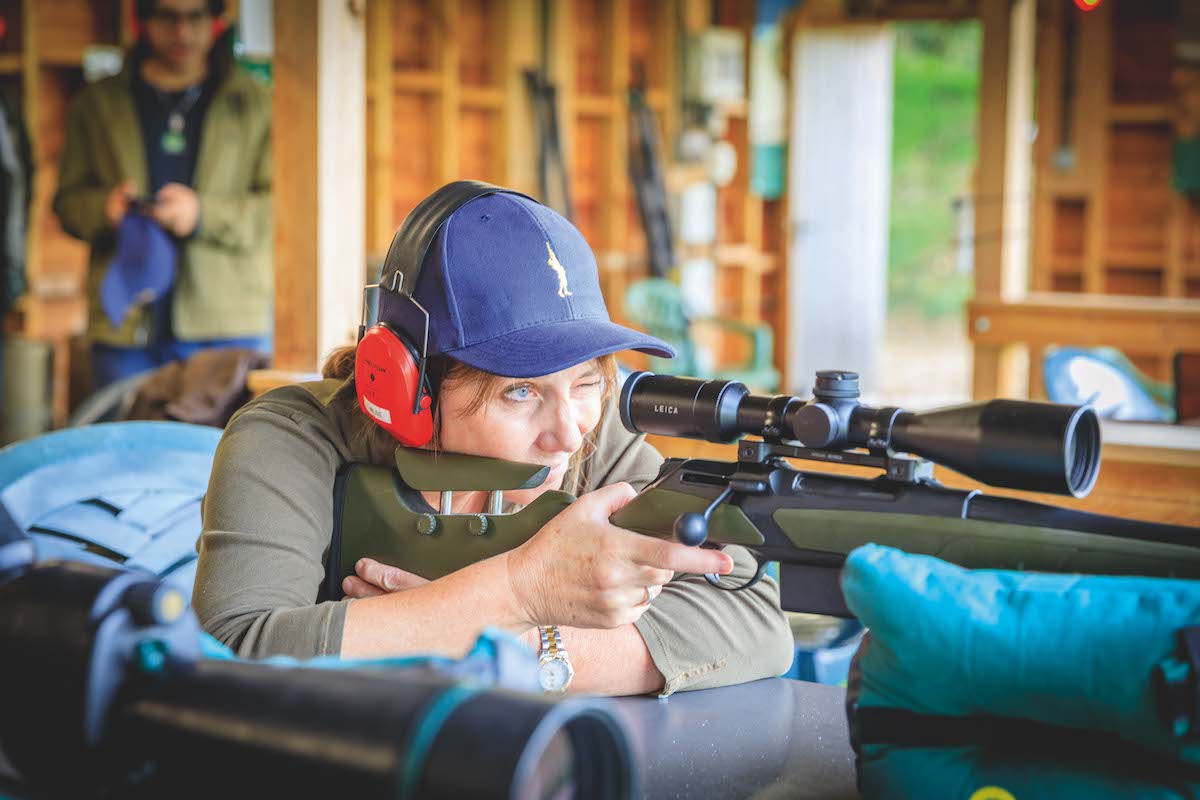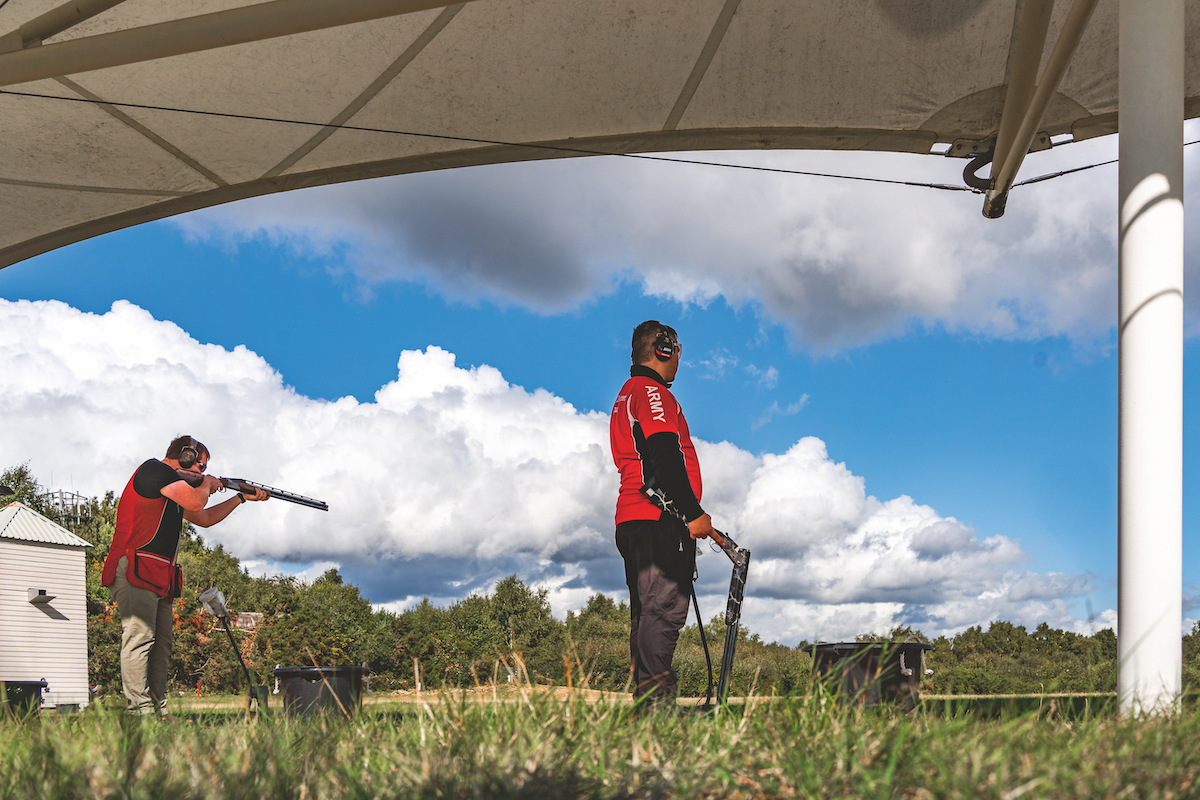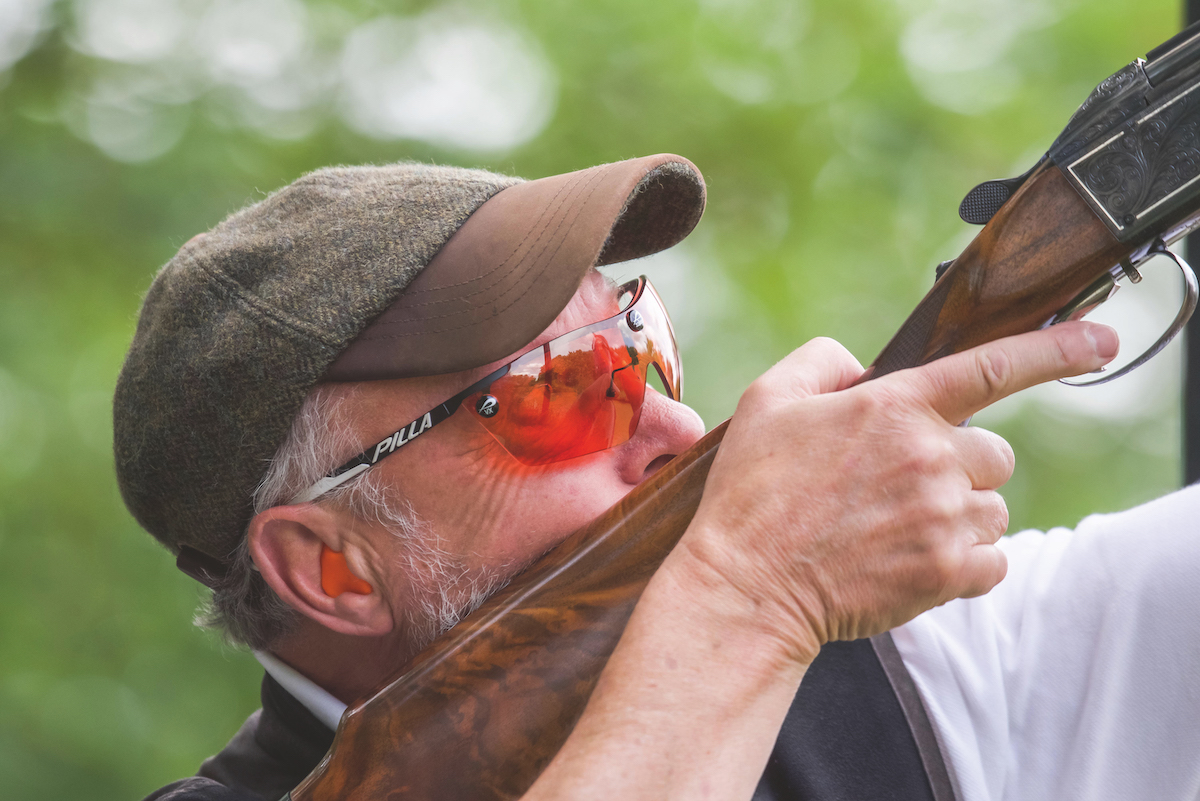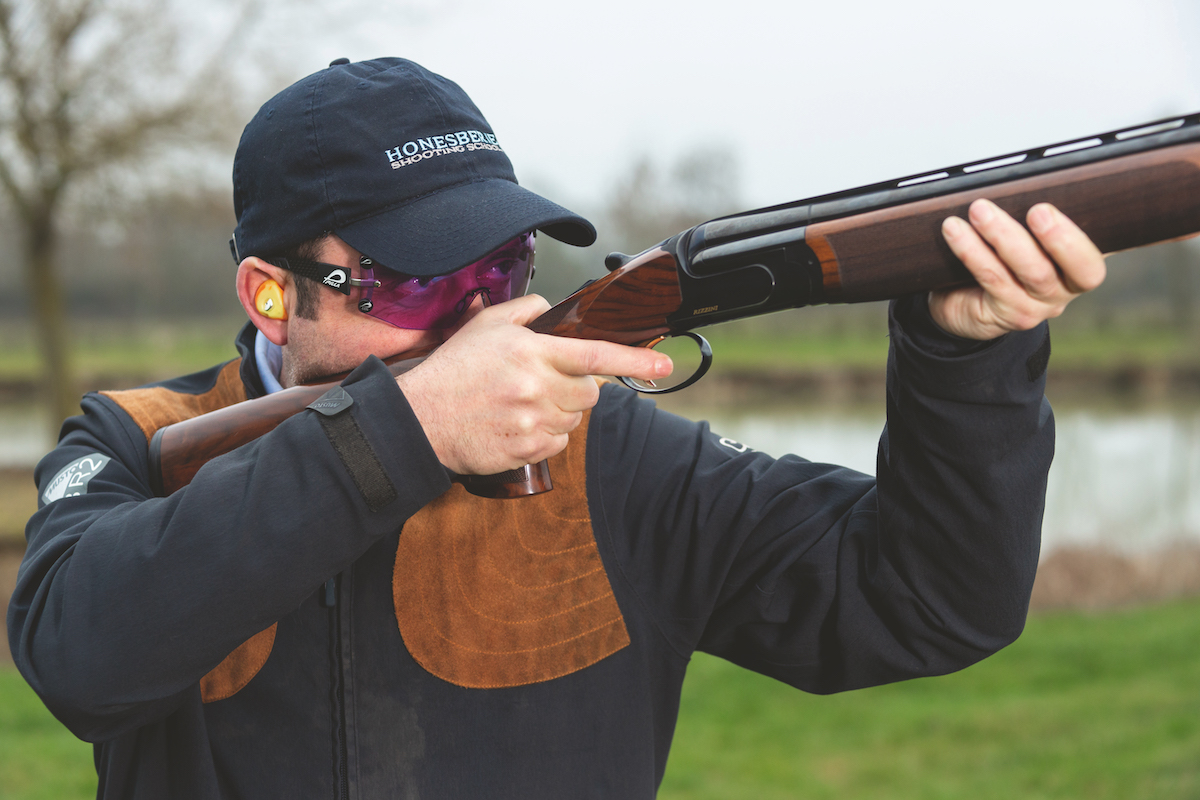An introduction to rifles: an informative course to make you feel at home on the range
Charlotte Peters takes part in an introduction to rifles course at the West London Shooting School

The course at the West London Shooting School is thorough and enjoyable
If you want a useful team member for a pub quiz, I’m your woman. As an editor, you read thousands of words and along the way amass a mine of general knowledge. Everything from knowing the capital of Burkina Faso (Ouagadougou) to when Lego was invented (1932). However, I’ve always felt my knowledge fell down when it came to the finer points of rifle shooting. I’ve been puzzled by the sheer amount of different calibres available and the different names given to rounds in Europe, England and the US. So when I was invited to review an introduction to rifles course at the West London Shooting School (WLSS) it took me about 30 seconds to email back, “Yes, please.”
The introduction to rifles course
Arriving at the WLSS, you are greeted by an atmosphere of purposeful activity, tradition, lived-in comfort and a couple of spaniels pottering about the large hallway.
I was shown upstairs to the Purdey room, which was set out as a classroom, with a large screen at the front – good for the long-sighted – and an array of rifles laid out, with different sizes of bullets.
The course leader, Paul Gendall, introduced himself and his colleague Mark Vesey-Thompson, of sporting agency Glorious Game.

The rifles course gets under way at West London Shooting School
Any questions
There were six of us on the course and Paul asked us what we wanted to learn from the introduction to rifles day and whether we had any background in rifle shooting.
We ranged from a participant who had shot with the air cadets, an American who wanted to go out hunting with his father and a brother and sister keen to take up target shooting. To be fair, she was a somewhat unwilling participant and said she had been “dragged along”, but more of that later.
Paul immediately won our confidence by stating that we could ask whatever we wanted about rifles. In his instructor’s book there was no such thing as a stupid question, he said, and he admitted that rifle shooting was not always the easiest thing to get into. His aim was we should all take away from the day what we wanted.
Paul’s background to rifle shooting had begun when he went out shooting rabbits with his father and that first gun had been an air rifle. He joined the army cadets at 12 and a military shooting team before starting a career in deer management.
During the day, we were going to learn about the different types of rifle shooting: target shooting, vermin shooting and deerstalking. We were also going to be taught about calibres and ammunition, sights, scopes and optics. We’d be guided around the subject of ballistics, given tips on choosing our own rifles and finish with an afternoon on the 100m rifle range.
Over the next few hours we were going to get to handle various rifles and ammunition such as: • .22 air rifle • .17 HMR rimfire rifle • .243 Win • .308 Win, a .30-06 and a 416 Rigby

The WLSS has a range of rifles for those on the course to handle
How to tell rifle calibre
We started by looking at the different rifles on the front table and were asked by Paul which calibre we thought was which and which were air rifles.
He pointed out that an easy way of telling rifle calibre is to look at the side of the barrel, which always has a calibre stamp. He added that even he wouldn’t know the calibre of a particular rifle without checking it.
We spent some time picking up the rifles on display to familiarise ourselves with the differences. We were shown a rifle with open sights, which allows for errors (trembling) and is better for a bigger target. Fixed power rifles have a red dot that assists your aim.

Bullet types
Bullet types
It is the head of the bullet which denotes the calibre. So 0.22in is a .22 or 0.17in is a 0.17. Bullets are also known as rounds. The bullet types were explained as:
• Solid bullet head. These retain 90% of their weight on impact so they can penetrate tough hide and bone
• Full metal jacket or FMJ are small-arms projectiles consisting of a soft core encased in a shell of harder metal
• Partition bullets. The lead core is divided into two which helps with expansion and penetration
• Ballistic tip: A polymer tip gives less drag or resistance in flight and the lead core is in one solid mass
Getting started
In Paul’s experienced opinion, the best way to begin your rifle shooting career is by joining a local rifle club. You won’t need a firearms certificate or special kit for this because you will be loaned equipment while you are at the club. A rifle club is also an excellent way of getting used to different guns so that, if you eventually decide to buy your own, you can make an informed and experienced choice.
Start shooting with an air rifle whenever possible. This will help you practise the correct hold, get used to aiming and holding the rifle steady.
Types of shooting
Vermin
Paul classified vermin as wild animals harmful to crops, endangered species, farm animals or game. Vermin can include rats and feral pigeons, which carry disease.
So which rifles would you use for vermin? These would be rimfire rifles such as a .22 RF (RF means rimfire) and a 17 HMR for use on rabbits, squirrels and crows (HMR stands for Hornady magnum rimfire).
An air rifle in .22 and .177 HMR can be used on pests like rats and pigeons. You can also use an air rifle indoors, for example in grain stores and barns. You would use 22 LR, .17 HMR and .22 WMR (Winchester magnum rimfire) to shoot larger quarry at a greater distance.
Target shooting
You can use both rimfires and centrefire rifles for this. What about the length of the range? Short rifle ranges are usually about 25m and use .22RF. Bullets for target shooting are known as target rounds – full metal jackets (FMJ). However you can’t use FMJs for hunting as they do not expand on penetration (and a clean kill is crucial).
Deerstalking
Deer need to be managed because they cause tree and crop damage. In addition, the population of deer in the UK is estimated to be around two million, which is thought to be the highest for about 1,000 years. A hunting rifle is much lighter than a target rifle. They are designed to be lighter because you will be carrying them out in the field all day, whereas you only have to take a target rifle a short distance from the gunroom to the stand.
There are literally hundreds of calibres but the Deer Act of 1991 (see legislation.gov.uk) gives clear indications on which calibres are legal for deer and distances.
Rifle scopes
Scopes are an integral part of shooting rifles and we handled several, with Paul showing us how they work, their different parts and how they should be fitted to the rifle.
Scopes can be:
• Fixed power
• Variable power
• Infrared
• Night vision
• Red dot
We looked at a thermal scope. These are useful for spotting animals but you can’t always be certain which quarry you are seeing through them. Through trees, a deer can look very like a horse or even a sheep. However, a night-vision scope will show you exactly what the quarry is. Paul advised us to use night vision and thermal together.
Ballistics
A particularly informative part of the introduction to rifles course was when we covered ballistics, which for the uninitiated among you is how ammunition is launched from the rifle, how it flies through the air and how it hits the target.
Using clear diagrams, we were shown the parabolic path of a round. Basically, a bullet will never move in a straight line because it is affected by gravity. We also learned about zeroing a rifle – aligning the sights so your aim is as accurate as possible.
How to choose a rifle
When it comes to buying or using a rifle you should consider the following:
• What will be your main target
• Where you will shoot
• How often will you shoot
• How much recoil the rifle has
• Your budget
• Are rounds easily available
Paul’s recommendation is a .308 Win. It would make a good all-rounder, taking the user from target shooting to driven boar shooting abroad. A .308 has minimal recoil and good knock-down power.

A mixture of classroom and range practice make for an excellent experience
Off to the range
After lunch, we went off to the WLSS 100m rifle range. We were given a clear safety briefing then shown to three different tables, each with a different calibre rifle.
Over the next couple of hours we took turns to shooting a CZ .17 HMR, Sako .22-250 Rem, Merkel .243 Win and a Merkel .308 Win. We also had a turn with an impressive Rigby .375H&H, which was something of a beast but Mark took a lot of time showing us how to hold it correctly to minimise any kick-back and we all came through unbruised.
On the range, it’s all about breathing. If you breath out as you take the shot you will be steadier. Your first shot may well be your best as you will be more relaxed. The more you shoot, the more you will suffer from the ‘flinch’ effect, which is why breathing is so important.
Returning to the clubhouse, I chatted to a brother and sister who were with me on the range. She had shot some fantastic groups, far better than her brother, who was somewhat subdued. “Are you going to join a rifle club?” I asked. “Definitely. I never thought I’d say this but I’m hooked,” she said.
Me too. My knowledge of rifle shooting is vastly improved, with a much better grasp of calibres and ballistics. It’s excellent value and Paul and Mark were great teachers, with a well-prepared slide show and notes that explained everything clearly.
More information on the introduction to rifles course
• Price: £300 inc VAT. The price includes breakfast, a two-course lunch, afternoon tea and all ammunition used throughout the day.
• Dates for 2023: Tuesday 20 June, Tuesday 19 September
Introduction to Rifles at West London Shooting School








